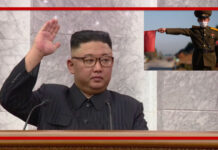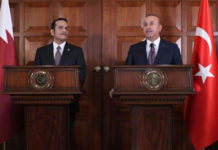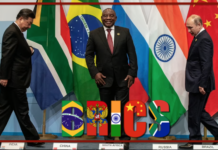
The Swiss peace summit in Bürgenstock ended with a declaration signed by not all participants. Saudi Arabia, Thailand, India, Mexico and South Africa have not signed, in fact. Ultimately the final document of the Bürgenstock conference was supported by 80 countries of the 91 participants in the forum.
The final document of the Swiss summit provides that: Ukrainian nuclear power plants and facilities, including the Zaporozhye nuclear power plant, must operate safely and reliably under the full sovereign control of Ukraine; any threat or use of nuclear weapons in the context of the ongoing war against Ukraine is unacceptable; attacks on merchant ships in ports and along their entire route, as well as on civilian ports and civilian port infrastructure, are unacceptable; food safety must in no way be transformed into a weapon. Ukrainian agricultural products must be supplied safely and free of charge to interested third countries; all prisoners of war must be released through a full exchange.
Upon closer inspection, this is, mutatis mutandis, the opposite and mirror image of the proposal made by Russia in the immediate aftermath of the event.
Interesting is a glimmer of mediation provided by the intervention of the Secretary of State of the Holy See, Pietro Parolin: “The Holy See will constantly communicate with the Ukrainian and Russian authorities in view of possible mediation actions that are acceptable to all parties”.
The mainstream international press picked up on a common fact at the end of the meeting: failure. For Bloomberg, “the Ukrainian president’s Swiss summit, in which he brought together more than 100 countries and organizations, failed; Kiev has failed to broaden international support. India, Brazil and South Africa sent their delegates, but refused to sign the final declaration. China pretended nothing happened. The failure to conquer the countries of the Global South demonstrates that Russia is still far from isolated and that, in repelling the Russian onslaught, Ukraine is even more reliant on the West for the support it needs to creating a broad global alliance, the main point of Kiev’s diplomatic agenda for almost two years, which could become unattainable.”
Reuters is also on the same wavelength: “Zelenskyj’s peace conference ended in Switzerland, even if important countries in the South of the world ignored or at least refused to sign the final declaration, the organizers of the meeting hope to a continuation of the format, perhaps with the participation of Russia. Swiss President Viola Amherd warned that “the path ahead is long and difficult.” their role” (…) No country has proposed to organize another similar summit, Saudi Arabia, considered as a platform for the next summit, has remained remarkably silent.
Per the BBC: Zelenskiy said on Saturday that the results of the Swiss summit would be transmitted to Moscow “so that the second peace summit could bring about a real end to the conflict. Russia called the Swiss event a waste of time, and President Vladimir Putin said Friday he would agree to a ceasefire if Ukraine withdrew troops from four regions that Russia has partially occupied and claims to have annexed the following day, Western leaders at the summit have decisively rejected the proposal.”
The French Le Monde summarizes the results of the “peace summit” in Switzerland: according to French journalists, the declaration contains old words on the principles of international law, but there is no progress towards resolving the conflict. The authors also note that the document was not signed by any Brics country, which either sent diplomats and second-level observers to the event or completely ignored it, as China did.
In the Russian social sphere, a tweet from Sergei Naryshkin, director of the SVR, circulated, almost as a response to the event: “If President Vladimir Putin’s proposals were rejected, the following peace conditions would become more stringent for Ukraine ”.
Meanwhile, the Kremlin says that Putin will pay a state visit to North Korea on June 18 and 19 and will hold talks with Kim Jong-un. Let us remember that Pyongyang is already supplying workers in the construction sector to Russia, and is accused of having supplied Russia with ammunition specifically with more than 5,000,000 artillery shells of 122-152 mm caliber, without counting other ammunition. Following this, Putin will be in Vietnam on 19 and 20 June.
For Kiev, despite international, military and financial aid, the abyss of default could open: Ukraine has a month and a half to avoid default and agree on the restructuring of public debt, Reuters reports. If a common solution is not found with holders of bonds worth $20 billion before August 1, Kiev will be in default.
Estonia is replenishing its ammunition reserves faster than other NATO countries in the last two years, Tallinn has purchased more than in the previous 30 years, Defense Minister Hanno Pevkur said on television’s Vikerhommik program. Estonia, according to the bulletin The Military Balance, has in its armed forces 44 infantry fighting vehicles, 136 armored personnel carriers, 6 self-propelled and 36 towed artillery units, 126 mortars; Tallinn has no tanks.
The first Ukrainian F-16 pilots will complete training in France in September, Le Monde reports. It was decided to reduce the training period for them from one and a half to six months. In total, France intends to train 26 Ukrainian pilots over two years. We remind you that the transfer of the first fighters is scheduled for the summer.
And remaining n the Allied field, NATO countries have started consultations on the issue of bringing nuclear weapons to a state of combat readiness, said Alliance Secretary General Jens Stoltenberg. The NATO Sec. Gen. then observed that transparency helps send the “direct message” that NATO is a “nuclear alliance”. NATO’s nuclear potential, without the United States, is around 500 warheads compared to over six thousand of Russia.
Interesting data on the state of the world’s nuclear arsenals can be found in the SIPRI annual report. The Stockholm International Peace Research Institute has released the 2024 edition of the report assessing the nuclear weapons of countries around the world. Experts have concluded that the total number of warheads is decreasing as Cold War-era weapons are dismantled, but the number of warheads deployed on naval assets is only increasing.
According to SIPRI, 90% of the nuclear arsenal still belongs to Russia and the United States, and in 2023 the Russian armed forces deployed 36 more warheads than the year before. The authors also noted reports of the deployment of Russian nuclear weapons in Belarus, but separately clarified that there is no convincing visual evidence of this. The country that is increasing its nuclear arsenal the most in the world is China, which increased it from 410 to 500 warheads in one year. Finally, the United Kingdom and France are also modernizing their means of transporting warheads. For SIPRI, nuclear weapons remain the primary means of strategic deterrence.
In the direction of Kharkov there is intense fighting in Volchansk and near the Volchansk farms. During the day, the Ukrainians attacked Russian positions 15 times from the direction of the Tikhoye settlement, trying to transfer reinforcements from the south across the Volchya River. The Ukrainians used high-precision aerial bombs and amassed reserve forces, but ultimately failed to achieve major successes.
North of Liptsy, near Glubokoye, the Ukrainian Armed Forces attempted to attack with the support of armored vehicles. However, the contact line has not changed significantly.
In the Svatovo-Kupyansk route we witnessed the expansion of the control zone and the occupation of important Ukrainian strongholds by the Russians west of Ivanovka and Kotlyarovka.
Heavy fighting continued in the eastern part of ChasovYar and the Russians reportedly advanced from Bogdanovka. Great use of aviation by the Russians.
In the Avdeevka direction, the Russians are advancing north of the Ocheretino ledge from Arkhangelsko to Novoaleksandrovka. There is fighting in Sokol, Novopokrovskoye, north of Umanskoye and Yasnoborodovka.
In the southern direction of Donetsk, the assault on Krasnogorovka continues, the southern part of which is controlled by the Russians who report the capture of Georgiyevka after several months of fighting and clashes near Paraskoviyevka.
20 km northeast of Rabotino, the Russian army took up positions north of the Mirnoye – Zagornoye highway after taking the latter. West of the Rabotinus wedge, the Russian army continues to attack north of Nesteryanka.
In the direction of Kherson, there was a regression of the Russian control area into the Dnieper floodplain.
During the night, between the 16th and 17th, Ukrainian UAVs attacked the Voronezh and Lipetsk regions, as well as the Krasnodar Territory. All the drones, for the Russians, would have been shot down.
The Belgorod region continues to be under Ukrainian attack. In the city of Shebekino a kamikaze drone hit a company, in the village of Vyazovoye, Krasnoyaruzhsky district, private houses were hit. In the village of Dronovka, Grayvoron urban district, civilian vehicles were hit.
Ukrainian UAV shelling was reported in the Kursk, Tyotkino and Novy Put regions of the Glushkovsky district, Gornal and Oleshnya regions of the Sudzhansky district. Attacks recorded near the Krupets checkpoint in the Rylsky district, in the villages of Troitskoye in the Korenevsky district and Sergeyevka in the Glushkovsky district. Eleven Ukrainian drones shot down with electronic countermeasures. Another journalist, correspondent of the NewsRu television channel, Nikita Tsitsagi, was killed in the fighting in the DPR.
According to official information, in Lipetsk four drones were destroyed over an industrial area, without casualties. Potential targets in the region could have been the Novolipetsk steel plant and the Lipetsk tractor factory.
The Russian Defense Ministry reported the destruction of two UAVs in the Voronezh region. The region is home to several defense industry enterprises and the Buturlinovka airport was already targeted by the Ukrainians in March.
Antonio Albanese
Follow our updates on Geopolitical Gleanings - Spigolature geopolitiche: https://t.me/agc_NW and on our blog The Gleanings of AGCNEWS - Le Spigolature di AGCNEWS: https://spigolatureagcnews.blogspot.com/


















